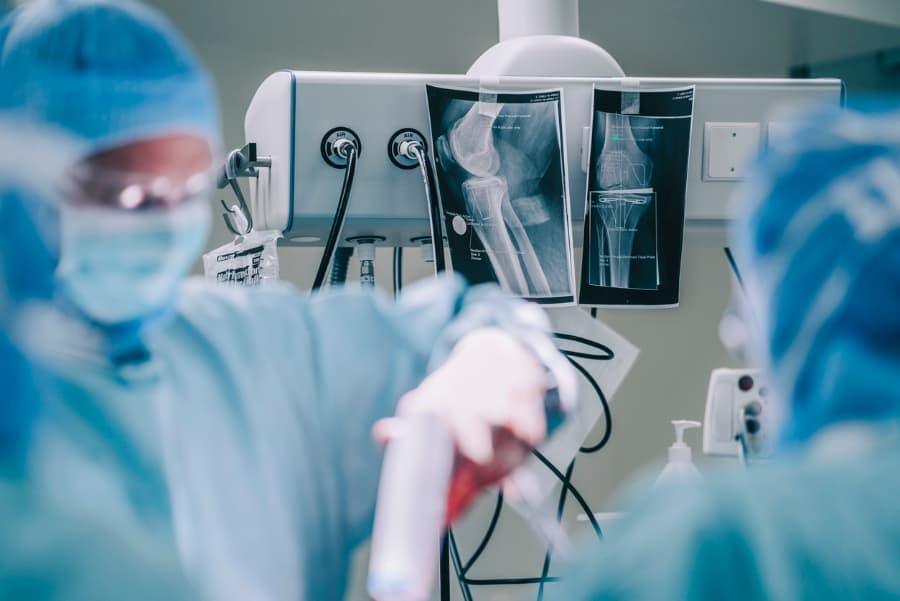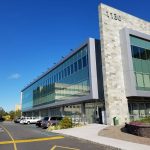Arthroscopic Surgery in Staten Island, NY
Joint problems can cause pain and stiffness that can affect a person’s quality of life. Luckily, there are ways to diagnose and treat joint problems, including minimally invasive surgery methods like arthroscopic surgery. Arthroscopic surgery is a procedure for visualizing the affected joint so a diagnosis can be determined and the problem can be treated.
Richmond University Medical Center on Staten Island, New York, is a healthcare facility offering medical services in a wide range of specialties, from orthopedics to oncology. Learn more about arthroscopic surgery at Richmond University Medical Center.

What Is Arthroscopic Surgery?
Arthroscopic surgery, or arthroscopy, is an orthopedic surgical procedure used to visualize the joint causing pain or problems with a special tool called an arthroscope. Once the medical team can accurately see within the joint, they can use the findings to confirm a joint condition diagnosis and determine what exactly is causing the problem. Arthroscopic surgery can also be used to treat the problem. The procedure is mostly used on the knee joint, but can also be used on the shoulder, elbow, ankle, hip, and wrist joints.
What Is the Process of Arthroscopic Surgery?
Arthroscopic surgery is a minimally invasive surgical procedure, which means that it only requires small incisions, unlike a full-open operation. Although the procedure is minimally invasive, the patient will still need to be numbed or put to sleep using anesthesia.
The surgeon will make small incisions over the affected joint and insert a tool called an arthroscope, which is a thin tube with a camera attached. The camera is connected to a video screen that allows the surgeon to precisely see inside the problem joint. The surgeon can see what is happening within the joint and determine what is the most likely cause. Sometimes, the orthopedic surgeon may be able to treat or repair the problem at the same time as the arthroscopy using specialized tools, while other times a separate procedure may be needed.
What Conditions Does Arthroscopic Surgery Diagnose and Treat?
Arthroscopic surgery can be used to diagnose and treat a range of orthopedic problems, although physicians will often try using other methods like physical exams or imaging to try to diagnose the problem before resorting to an arthroscopy. However, arthroscopies are especially helpful for cases in which the diagnosis and cause cannot be determined by other methods. The conditions arthroscopic surgery can help diagnose and treat include:
- Rotator cuff tendon tears
- Torn ligaments
- Scarring within joints
- Synovitis (a condition causing inflamed tissues around joints)
- Cartilage tears or damage
- Shoulder impingement
- Recurrent dislocation in the shoulder
- Anterior cruciate ligament (ACL) tears
- Carpal tunnel syndrome in the wrist
- Loose fragments of bone or cartilage
Procedures Used in Arthroscopic Surgery
Arthroscopic surgery originally was used solely to diagnose joint conditions. However, evolutions in technologies over time have allowed surgeons to complete corrective procedures with arthroscopy techniques. The following procedures can be performed using arthroscopic surgery:
- Rotator cuff repair
- Repair of torn ligaments
- Removal of synovium in the affected joint
- Repair or resection of torn cartilage
- Reconstruction of the ACL in the knee
- Release of the carpal tunnel in the wrist
- Removal of loose bone or cartilage in the joint
As the technologies continue to evolve, more procedures and joints may be able to use arthroscopy as a treatment option. Many patients prefer an arthroscopic approach to a more intensive surgical procedure because it offers a quicker recovery time, less scarring, and increased accuracy.
Arthroscopic Surgery Recovery
Recovery from arthroscopic surgery is typically easy since the procedure is minimally invasive, and usually takes place in an outpatient center. After the surgery, the patient’s incisions will be bandaged with dressings to protect them from infection and the patient will be sent to a recovery room.
The incisions usually heal within a few days and the dressings can be removed the day after surgery. However, the full recovery of the joints will take longer, around a few weeks. Before the patient goes home, they will receive instructions from their surgeon on caring for the incisions, activity limitations, and exercises to help them recover.
If the surgeon discovers a problem during an arthroscopy that cannot be fixed during the procedure, another surgery or procedure may have to be scheduled to fix the problem.
Frequently Asked Questions about Arthroscopic Surgery
How do I prepare for arthroscopic surgery?
Preparing for arthroscopic surgery involves a few steps, starting with asking the surgeon any questions you have about the procedure and undergoing any pre-op testing. Once the surgery is scheduled, you will need to fast the night before the surgery, schedule someone to drive you home, and arrive at the hospital or outpatient center on time.
Does arthroscopic surgery work for arthritis?
Some joint problems associated with arthritis can also be treated with arthroscopic surgery. However, according to current guidelines from the Arthritis Foundation, arthroscopic surgeries are no longer recommended for osteoarthritis (OA) of the knee or other degenerative knee diseases.
Are there complications of arthroscopic surgery?
The risk of complications for arthroscopic surgery is low (less than 1% of procedures) but still possible. Some of the possible complications include infection, blood clots in a vein, excessive swelling, bleeding, and blood vessel or nerve damage.
Will I need pain medication?
Patients generally do not need prescription pain medications after an arthroscopy because of the minimally invasive incisions used. If patients have some pain, certain over-the-counter pain relievers may be used, but they should ask their doctor about approved medications.
When can I return to my normal activities?
How quickly patients recover and can return to their daily activities depends on a few factors, such as their overall health, the procedure used in the arthroscopy, and what joint was affected.
Arthroscopic Surgery at Richmond University Medical Center
Richmond University Medical Center is a multi-specialty medical provider with experienced, board-certified physicians and surgeons. Our orthopedic unit offers patients access to the latest advances in orthopedic surgery, including minimally invasive methods. The dedicated team of orthopedic surgeons at Richmond University Medical Center has the experience and tools needed to diagnose and treat orthopedic conditions. Our surgeons are trained in a variety of subspecialties, including:
- Arthroscopic surgery
- Joint replacement surgery
- Sports injuries
- Spine injuries
Richmond University Medical Center also offers designated orthopedic patient rooms for patients to recover after their procedures in a comfortable environment with medical staff around. To learn more about orthopedic surgery at Richmond University Medical Center, check out our Orthopedics and Sports Medicine Brochure.
Make an Orthopedic Appointment Today
Patients with undiagnosed or untreated joint problems don’t have to live in pain— they should ask their physician if arthroscopic surgery is an option for them. Richmond University Medical Center serves patients on Staten Island, NY, with comprehensive, multi-specialty medical services, including arthroscopic surgery. Make an appointment today with an orthopedic specialist or contact us to learn more.



